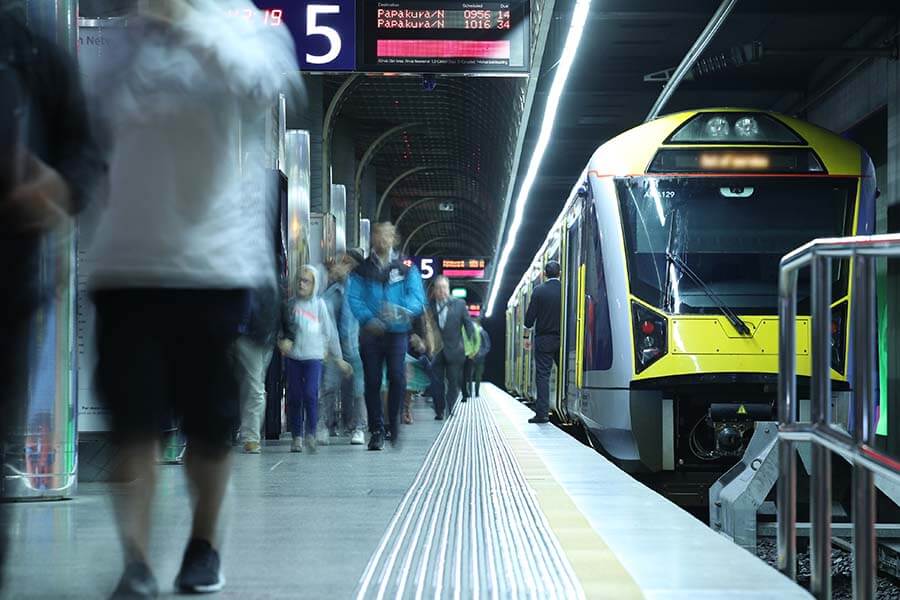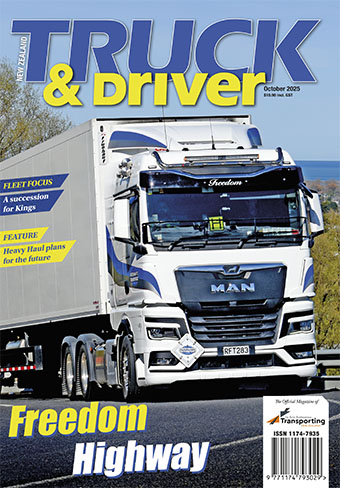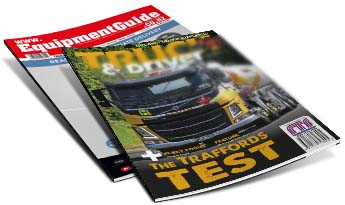Ia Ara Aotearoa Transporting New Zealand News


Customers drive just-in-time realities of 21st Century freight
In May, the Government released the New Zealand Rail Plan, with State Owned Enterprises Minister David Clark saying that the plan – “and the Government’s commitment to rail – is designed to set the right conditions to balance our transport system and create options for NZers.”
My question is: How can this balance NZ’s transport system and create options, when rail currently shifts so little of our freight task…and the opportunity to increase this share is so small?
Said Clark: “We’re making sure that KiwiRail has the trains it needs to carry more freight around the country, and that the tracks in our cities and regions are up to standard to support freight and commuter growth.”
Having enough trains does not automatically mean customers will choose rail over road, especially with time-sensitive freight, or freight that needs to be delivered door-to-door.
Increasing the number of trains won’t reduce the number of trucks on the road – if anything, more trucks will be needed to move freight from the source to the railhead and from the railhead to the end customer.
The NZ Rail Plan is essentially a plan to have a plan, to make rail a contender for a greater share of the freight task and bump trucks off the road. It totally misses the mark of what is happening in freight movement globally.
...In May, the Government released the New Zealand Rail Plan, with State Owned Enterprises Minister David Clark saying that the plan – “and the Government’s commitment to rail – is designed to set the right conditions to balance our transport system and create options for NZers.”
My question is: How can this balance NZ’s transport system and create options, when rail currently shifts so little of our freight task…and the opportunity to increase this share is so small?
Said Clark: “We’re making sure that KiwiRail has the trains it needs to carry more freight around the country, and that the tracks in our cities and regions are up to standard to support freight and commuter growth.”
Having enough trains does not automatically mean customers will choose rail over road, especially with time-sensitive freight, or freight that needs to be delivered door-to-door.
Increasing the number of trains won’t reduce the number of trucks on the road – if anything, more trucks will be needed to move freight from the source to the railhead and from the railhead to the end customer.
The NZ Rail Plan is essentially a plan to have a plan, to make rail a contender for a greater share of the freight task and bump trucks off the road. It totally misses the mark of what is happening in freight movement globally.
Freight is customer-driven: The customers get to choose the best way to have their goods delivered. The Government cannot direct the movement of freight just because it wants to – unless, of course, we annul all the progress made through the deregulation of the 1980s.
Currently, 93% of the freight moved in NZ is moved by road. That is projected to grow, given increased customer demands.
But the Government will now take the money road users pay into the National Land Transport Fund (NLTF) to further subsidise KiwiRail, with some fantastical notion that rail can take a considerable amount of freight off roads.
We think the user-pays model means the money collected for roads should go to fixing dangerous roads and building some new ones – which will benefit the economy and the environment.
A 2019 study found that preventative maintenance of road pavements could reduce greenhouse gas (GHG) emissions by up to 2%, even after adopting a life-cycle perspective and taking into account pollution generated during road construction.
Wouldn’t it be great if this Government put its money where its mouth is and maintained the roads – something we have long been lobbying for, and which operators pay a fortune towards through road user charges?
The Government has said it would implement track user charges (like road user charges) to add a contribution from rail to the NLTF. There were no details on how much track user charges would generate, or how they would work. My suspicion is that this will be a token charge, raising little more than a drop in the bucket when it comes to what we will spend on rail.
There is no doubt that NZ requires a well-maintained, first-world rail network and must replace old and tired assets, and we’re supportive of upgrading urban passenger rail and its infrastructure.
However, if funding to rail is justified by a promise that you will be shifting freight from road to rail, then that is, at best, extremely misleading.
We don’t support pouring billions more dollars into rail freight when it may only shift about 1% of the freight task from road. In the recent Budget, another $1.3billion was thrown rail’s way. We think that money could have been put to better use.
There are some 93,000 kilometres of roads in NZ – about 10% of which are state highways – and only about 4000kms of rail track. The split isn’t going to change significantly and freight customers will continue to make business-based choices.
Another Government report – the Transport Emissions: Pathways to Net Zero by 2050 Green Paper – confirms this, saying that online shopping and increasing demand for just-in-time delivery has influenced how freight companies operate.
The report outlines a number of ways to reduce emissions from the freight industry, including convincing consumers to accept longer delivery times, something the report says would be “challenging.”
That’s one way of putting it. I doubt many people used to ordering something today and having it delivered tomorrow will choose sustainability over speed. Even if they do, the logistics of increasing efficiency in the supply chain, along with centralised manufacturing, and switching to lower emission modes of transport, are not easily achievable in NZ due to our geography and population spread – which encourages a reliance on roads for its system.
Most of our consumption occurs in the upper North Island, whereas many exports are generated in the South Island’s rural regions, which poses challenges for freight load optimisation.
The report has a number of key actions for improving the efficiency of NZ’s overall freight supply chain, such as optimising freight routes, supply chain nodes, equipment and vehicles, and examining opportunities for the collection and better use of data to improve efficiencies in the freight system. We have no issue with these recommendations – the industry is already implementing many of them.
When it comes to key actions for decarbonising freight modes however, we do have some concerns: The industry is keen to do what it can, but the Government needs to remember NZ is a technology taker – we do not have the size to have any influence over what truck manufacturers make, and therefore there isn’t a lot we can do to speed up the transition to electric or hydrogen trucks.
Under consideration is whether the current RUC exemption for heavy electric trucks should be expanded to other low emission fuels used by heavy trucks, a move we would support.
We are concerned with some of the other options, such as the viability of introducing a penalty or financial disincentives system for high GHG-emitting heavy trucks, phasing out the registration of diesel heavy vehicles beyond a certain date, and banning diesel trucks in certain cities or zones.
The Government needs to work with the transport industry to help it meet the emission targets, not penalise us for things that are beyond our control. The report contains recommendations that indicate this could be a possibility. These include investing in a domestic industry to refurbish diesel trucks with zero emissions options, expanding the scope of the existing low emissions vehicles technology funding to accelerate the uptake of proven low emissions vehicle technology, and investigating the viability of providing upfront grants or other incentives for low emissions and zero emissions trucks.



 + EQUIPMENT GUIDE - FREE
+ EQUIPMENT GUIDE - FREE
